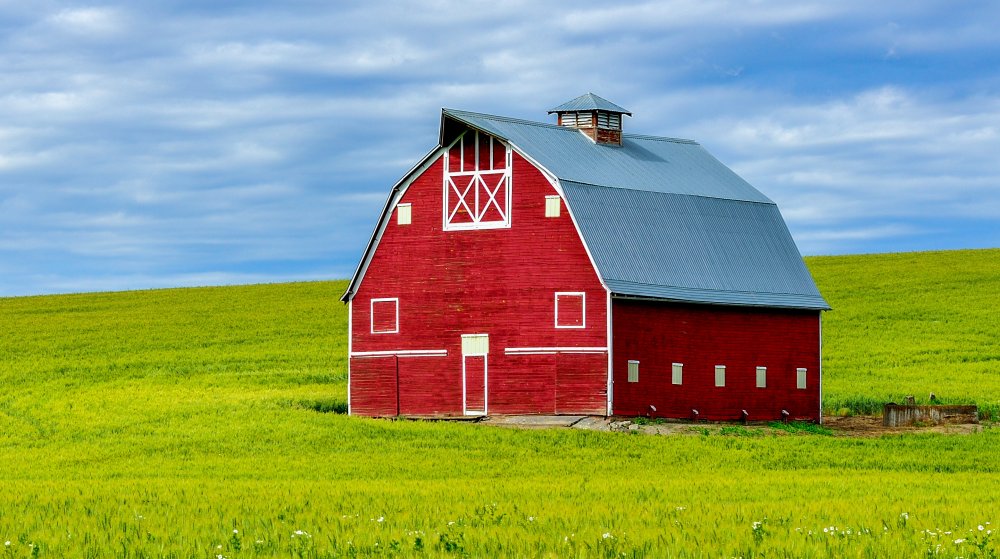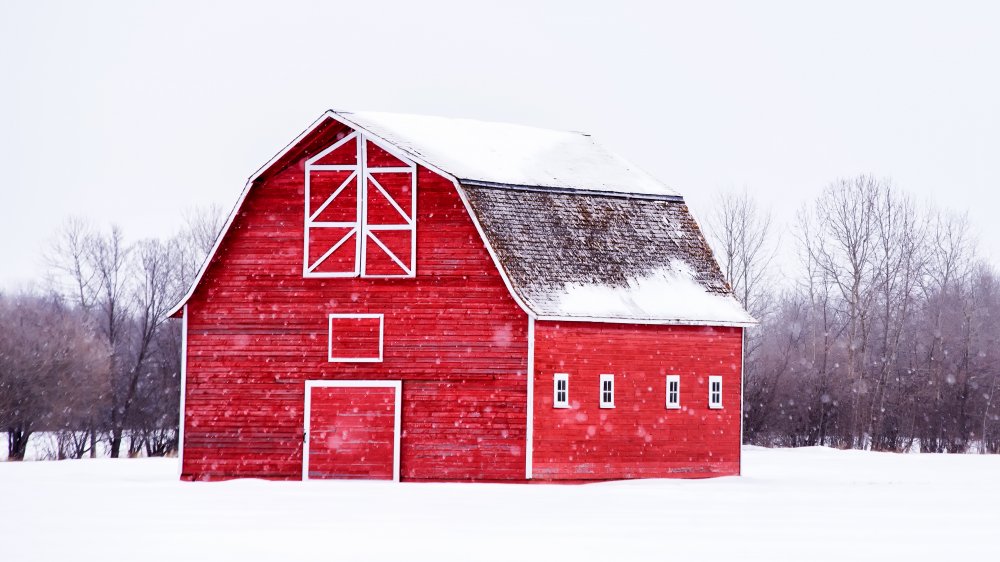The Real Reason Barns Are Painted Red
Old MacDonald had a farm, and on that farm he probably had a barn. Even though the song never mentions a barn, you can probably picture it. In fact, even if you got the animal sounds mixed up as a kid and have spent your entire life incorrectly thinking that cows quack and pigs moo, you can probably still say with utter certainty that Old MacDonald had a red barn on his farm. And if you visit other farms in the United States, you will likely see a red barn here and a red barn there. Here a red, there a red, everywhere a red barn. But it wasn't always that way.
Painting barns with rust and blood
Old MacDonald likely had a red barn, but his distant ancestor, Older MacDonald, probably didn't. As Live Science explains, the early farmers who took root in New England weren't a wealthy lot, and since money doesn't grow on trees, they didn't buy paint for their barns. Luckily, invention grows from necessity, and by the late 18th century, farmers started creating paint from scratch.
In much the same way that planes are painted white because it's cheap and helps prevent overheating, farmers painted barns red because that was the color of the most cost-effective paint coat, and it protected barns from the wear and tear of weather. But unlike white planes, red barns stayed warmer in the winter. The homemade paint contained a mix of skim milk, lime, and red iron oxide, and held up for years at a time. (So if you hate the taste of skim milk, you're not weird; skim milk literally tastes like barn paint). According to How Stuff Works, well-to-do farmers added the blood of freshly slaughtered animals to the paint, creating a dark red hue and a pretty dark situation overall.

